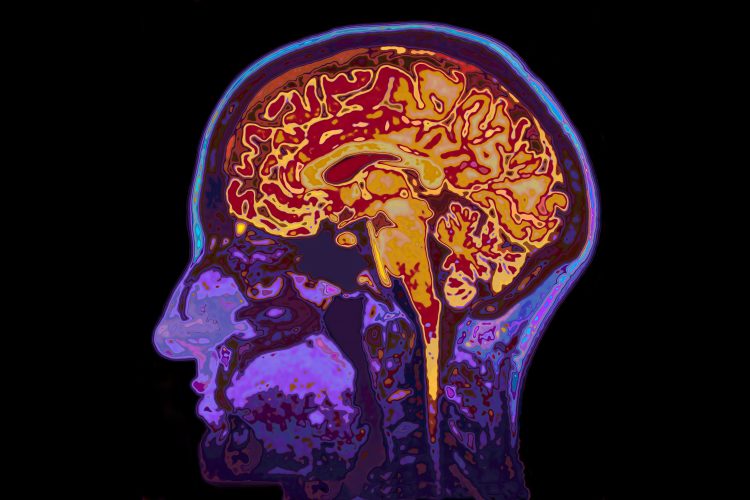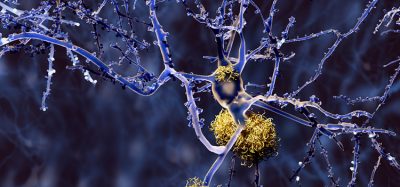Navigating the neuroscientific landscape with Dr Judy Illes
Posted: 19 December 2023 | Taylor Mixides (Drug Target Review) | No comments yet
In a world grappling with the growing spectre of eco-anxiety and the pressing challenges posed by climate change, Dr Judy Illes, a distinguished figure in the field of neuroscience, sheds light on the role neuroscientists play in contributing to the discourse on environmental issues and their profound impact on individual and collective well-being. In this interview, Judy emphasises the need for evidence-based neuroscience to address the mental health implications of environmental changes, urging a departure from geographical silos to foster global collaboration. The discussion extends to strategies for disseminating neuroscientific research across diverse cultural landscapes and the practical implications of bridging the gap between research and public awareness.


In light of eco-anxiety in our society, how can neuroscientists shoulder the responsibility of contributing to the discourse surrounding environmental challenges and their impact on individual and collective well-being?
I don’t think it is a question of neuroscientists having to shoulder the responsibility of responding to and addressing questions of eco-anxiety, climate change, and environmental change, but rather a matter of upping the interest in this space and delivering more evidence through great research. We need more good neuroscience discovery and meaningful clinical translation to address the issues that we’re seeing and that are being debated. On the mental health side, there is anxiety around climate change – Eco-Anxiety. On the neurologic side, there are findings about neurotoxins and environmental contaminants showing correlations with a variety of neurologic diseases across the lifespan from children to adults. Good study design, solid evidence, and good information dissemination with explicit evidence-based mitigation of misinformation will really contribute to climate change and environmental decision-making, policymaking, and improvements in brain-related health systems and care.
Considering the global scope of environmental issues, how might neuroscientific research transcend geographical and cultural boundaries to foster a more comprehensive understanding of the relationship between the environment and mental health?
That is such an important question and it speaks directly to the global movement in neuroscience today. Global neuroscience – cross-national, cross-geographic collaboration – is so important to bring the kind of evidence about which I spoke in response to your first question. There is no point in addressing climate change, environmental change, contaminants from neurotoxins and so on in geographic silos. These affect all people across all nations. We have so much to learn from each other. We have different perspectives, different languages, and potentially different belief systems. When we combine these into an integrated, concerted collaborative program, we will be able to advance the kind of neuroscience that I hope that my lecture at the Society for Neuroscience inspired and also help to propel forward the work of the International Brain Initiative whose headquarters reside with me now in Canada. This is precisely what we’re trying to achieve: geopolitically conscious, border-free global cooperation in neuroscience.
As we navigate the nexus of environment ethics, global neuroscience, could you elaborate on the potential harmonization of biomedical explanations with traditional beliefs about the brain and mental health and how these diverse perspectives provide answers to the challenges that we face?
This question is a good segue from the previous one. Thank you. First, let me say that I am a person of European background and I have had the privilege and the honour of working with indigenous peoples across Canada to learn about indigenous ways of knowing, of knowledge, of methods. My team has done empirical work through systematic literature reviews, scoping reviews, and a variety of research collaborations with indigenous Canadian people. I am also currently working around questions about portable MRI, for example, with colleagues across the USA, led by the University of Minnesota, to understand the important relationships and ethical considerations that come into play when we’re talking about work, research, and clinical translation that has to do with expanded access to MRI scanning with people from multiple cultures, and many who are in rural and remote regions of North America and the world.
With that preamble, to respond, I respectfully refer to Elder Albert Marshall and to what he called two-eyed seeing, which is a powerful way to bring together traditional belief systems, rooted in the medicine wheel, holism, relationships with the land and the earth, sky, water, air and fire, with biomedical explanations of mental health and neurologic disease. On the neuroscience side, we think about cells to systems: genes, brain development, demyelination, degeneration. It is equally meaningful to integrate this thinking with learnings and knowledge that preceded our understanding about genes and neuroanatomy and neurophysiology. In the past, we to dismissed traditional forms of belief systems. Today, we are seeing through the work of people in neuroscience, health sciences, ethics and law, anthropology and sociology that coupling the two can really bring wellness to an understanding of some of the major burdens of brain and mental health that affect people and societies today.
What strategies can neuroscientists employ to sort of disseminate their research effectively across diverse cultural landscapes, ensuring that insights gained resonate with populations worldwide and contribute to the broader discourse of environmental pressures and mental wellbeing?
Again, a wonderful question, Taylor. So there are innumerable strategies. I will only mention three that immediately come to mind.
The first is about data and evidence. Evidence, good science, and design that takes into account not only Western approaches but approaches from different people of different backgrounds and ways of knowing and doing that might date back to time immemorial. That is number one: data, and irrefutable evidence that are respectful of all methods of doing.
The second is working collaboratively in a very engaged way with people of different cultures and different geographies, whether they are Elders from communities or whether they are neuroscientists from different communities and geographic locations. In this way, the maximum breadth and potential of neuroscience discovery will be realised.
The third is collaboration among people who have expertise in the ethics of communication and dissemination of results, or with science communicators to maximize not only what results or findings are disseminated but how they are disseminated. That takes the form of K-12 teaching, undergraduate teaching, graduate teaching, postdoctoral teaching, teaching and communicating throughout the academic ranks, and equally importantly, through public outreach. I think what we’ve seen over the past 25 years of neuroethics is a tremendous improvement in the way that science reporting is taking place around brain and mind – around neuroscience. There really is a commitment, I believe, to working in a far more reciprocal way between the communication side and the science side to ensure that what gets out there is meaningful and appropriately-tailored to distinct audiences. It is multi-layered. It starts well before data collection, at the design and planning phases of research, and then all the way through engaging with the public as I mentioned, and with students of all ages.
Given the urgency of addressing environmental challenges, could you discuss the practical implications of bridging that gap between neuroscientific research and the broader public and how can the insights from this research inform policy, promote positive change on a global scale?
I think the responsible way to answer your question is to speak to the importance of systematic neuroscience discovery and systematic engagement. A very small study – pharmacologic, behavioral, whatever – that is robust can have a huge impact on changing the way health and policymakers think about an aspect of climate change, or a neurotoxin. For example, in my lecture, I spoke about glyphosates. I talked about methylmercury. Neuroscientists could not possibly take on the whole scope of neurotoxic contaminants for a research platform. The challenge is to choose one, choose an important one, and help decode and disentangle why there seems to be still controversies and debates around harms versus benefits that are leading to heterogeneous and conflicting international policies. Solve critical questions for one neurotoxin. Then move on to the next.
I talked a lot about fracking and how data show that the pushing hydrochloric acid into the earth to create fissures not great for the environment, for keeping the land and water clean, or for ensuring that traditional relationships with the land are preserved. The risk of fracking have to be taken in balance though with the economic benefits to communities that don’t have a lot of resources, for example, and may even be faced with food and water security. We must look at harms and benefits always, always in balance. We have to take these problems and tackle them bit by bit. Climate change, too big as a whole. But finding ways to protect children with severe brain disorders such as epilepsy whose condition might be exacerbated by extreme heat – that can be tackled. Environmental change with respect to neurotoxins too big. Discovering and addressing differential proximate and epigenetic effects of different neurotoxins – that can be tackled.
Neuroscience requires patience and systematic, rigorous deliberate methods. Today there is a new openness to thinking about all aspects of what results may suggest and how they may inform how people behave, govern, and invest in each other going forward.
About the author


University of British Columbia (UBC)
Dr Judy Illes is Professor of Neurology at the University of British Columbia (UBC), Distinguished University Scholar, UBC Distinguished Scholar in Neuroethics, and Director of Neuroethics Canada. She is a pioneer of the field of neuroethics through which she has made groundbreaking contributions to cross-cultural ethical, legal, social and policy challenges at the intersection of the brain sciences and biomedical ethics. Among her many commitments, she is Chair of the International Brain Initiative and co-Lead of the IBI’s Canadian Brain Research Strategy. She serves as Director-at-Large of the Canadian Academy of Health Sciences, and is a member of the Ethics, Law and Humanities Committee of the American Academy of Neurology.
Dr Illes is the immediate past Vice Chair of the Advisory Board of the Institute for Neuroscience, Mental Health and Addiction of the Canadian Institutes of Health Research (CIHR), and of CIHR’s Standing Committee on Ethics. Her recent books, a series called Developments in Neuroethics and Bioethics, focus on pain, global mental health, neurotechnology, transnational laws, environmental neuroethics, neurodevelopment, and neuroAI. Dr Illes was awarded the Order of Canada, the country’s highest recognition of its citizens, in 2017.
Related topics
Neurosciences
Related people
Dr Judy Illes (University of British Columbia)







